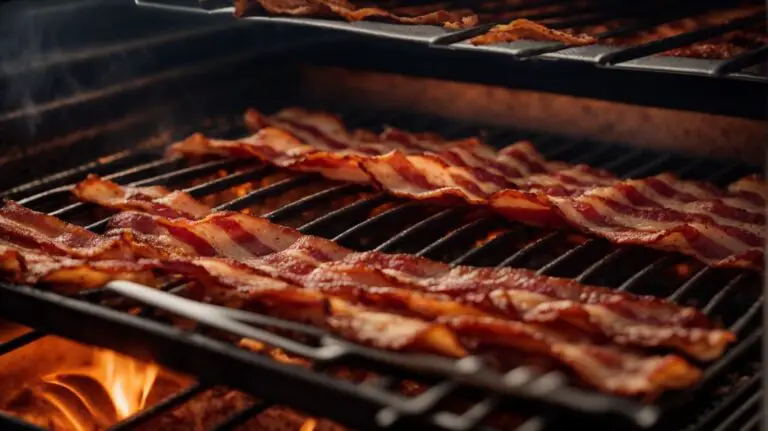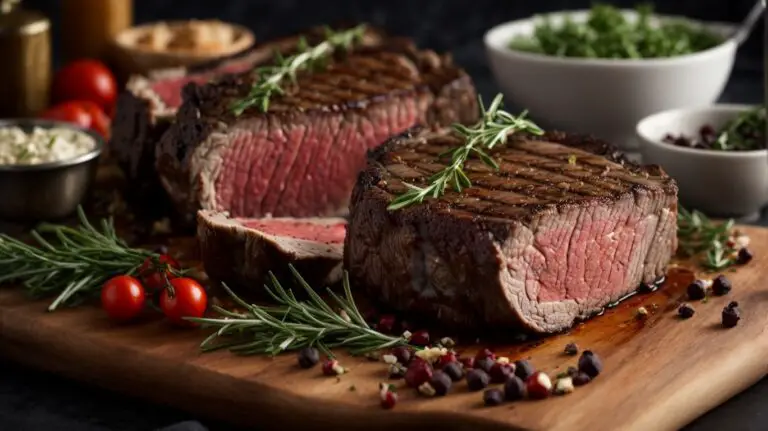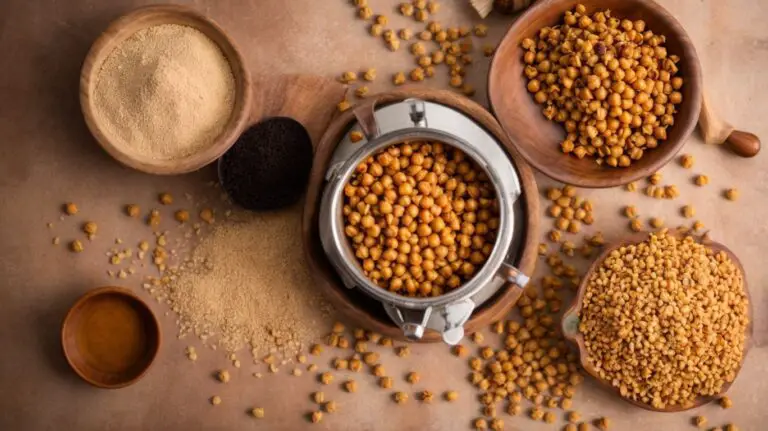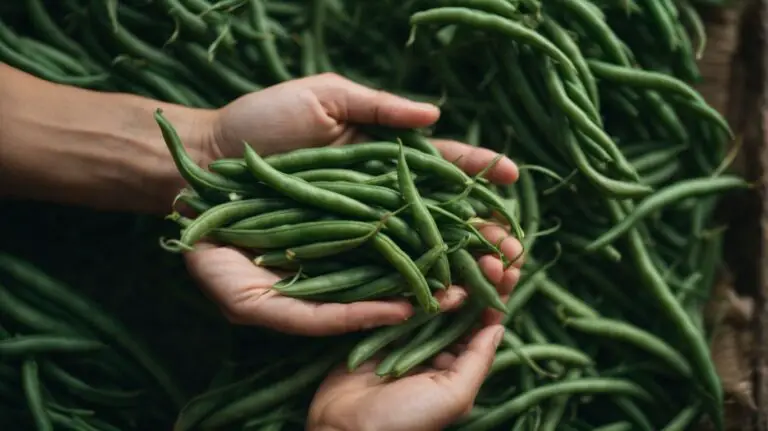How to Cook Lasagna Noodles Without Sticking?
Are you tired of your lasagna noodles sticking together and ruining your favorite dish?
We will explore why lasagna noodles stick and provide you with practical tips on how to prevent this common kitchen mishap.
From boiling enough water to using alternative methods like oven-ready noodles, we’ve got you covered.
Stay tuned for troubleshooting tips and a conclusion that will leave you ready to cook the perfect lasagna every time.
Keep reading to become a lasagna noodle master!
Key Takeaways:
Why Do Lasagna Noodles Stick?
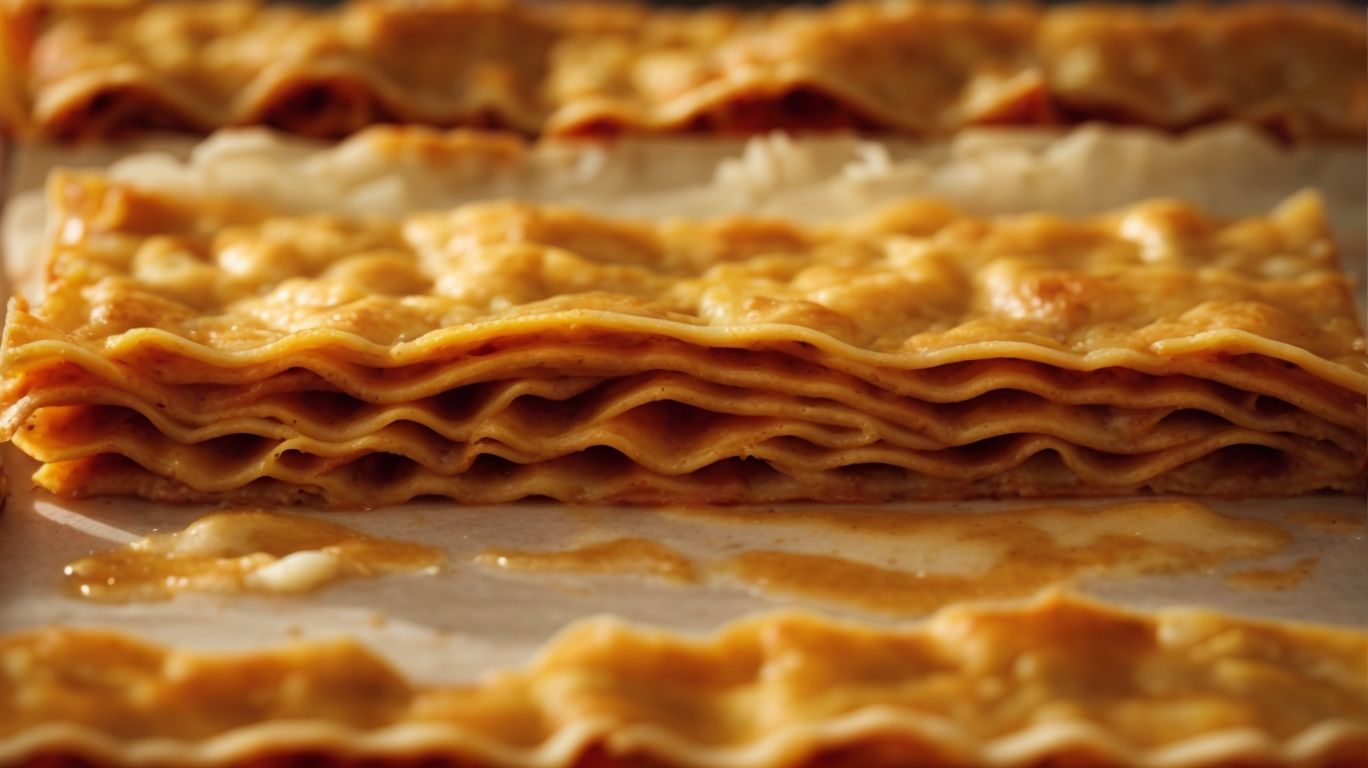
Credits: Poormet.Com – Logan Allen
Lasagna noodles tend to stick together due to the starch on their surface, which causes them to adhere when cooking.
Starch, a complex carbohydrate present in abundance in pasta, becomes sticky as it absorbs water during the cooking process. When lasagna noodles are cooking in a pot of boiling water, the starch molecules gelatinize and swell, creating a sticky layer on the surface of the noodles. This stickiness is what leads to the noodles clumping together if not properly handled. To prevent excessive sticking, it is advisable to stir the noodles frequently while boiling and add a splash of oil to the water to create a barrier that helps keep the noodles separate.
How to Prevent Lasagna Noodles from Sticking?
Preventing lasagna noodles from sticking involves using proper techniques such as boiling in enough water and adding oil to the water.
Another crucial step in keeping your lasagna noodles from sticking together is to ensure that you stir them frequently during the cooking process. Stirring helps to prevent the noodles from clumping and sticking to each other. Using high-quality olive oil when boiling the noodles can also enhance the flavor and texture while acting as a natural non-stick agent.
It is important to choose a large enough pot with plenty of water to allow the noodles to move freely during boiling. Overcrowding the pot or using too little water can cause the noodles to stick together. By maintaining a rolling boil and stirring occasionally, you can ensure that your lasagna noodles cook evenly and do not stick together.
Boil Enough Water
To prevent lasagna noodles from sticking, ensure you boil enough water in a large pot to allow proper circulation and cooking.
When cooking lasagna noodles, the amount of water used is crucial as it helps to regulate the temperature and prevent clumping. Proper water circulation ensures even cooking, resulting in noodles that are perfectly al dente. With sufficient water, the noodles have room to move around freely, decreasing the likelihood of them sticking together. This not only impacts the texture of your dish but also the overall presentation. Boiling enough water is a simple yet essential step to achieving a delicious and well-prepared lasagna every time.
Salt the Water
Adding salt to the water not only seasons the noodles but also helps in preventing them from sticking during the cooking process.
When you add salt to the boiling water for lasagna noodles, it not only imparts a subtle flavor to the noodles from within, enhancing the overall taste of the dish, but also improves the texture, giving the noodles a firmer yet tender bite. The sodium in the salt helps strengthen the gluten in the pasta, resulting in noodles that hold their shape better and are less likely to become mushy or clump together.
The salt acts as a natural flavor enhancer, subtly infusing the noodles with a savory undertone that complements the other ingredients in the lasagna. This simple step can elevate the entire dish, making each bite more enjoyable and flavorful.
Add Oil to the Water
By adding a little oil to the boiling water, you create a thin coating that helps prevent the lasagna noodles from sticking together.
When you add a slight drizzle of oil to the boiling water, it forms a protective layer around each individual noodle, acting as a barrier that stops them from joining forces in a sticky clump. This thin film of oil not only prevents the noodles from sticking to each other but also aids in keeping them separate throughout the cooking process. As each noodle is enveloped in a hint of oil, they glide past each other effortlessly, ensuring a velvety-smooth pasta texture in your final dish.
Stir the Noodles Frequently
To prevent lasagna noodles from sticking, make sure to stir them constantly during the cooking process to ensure even cooking and separation.
Stirring the noodles not only prevents them from clumping together and sticking to the pot but also promotes a more uniform texture throughout the entire dish. By keeping the noodles in motion, you help them cook evenly and avoid any unpleasant chewiness or uneven doneness. This simple yet crucial step can make a significant difference in the overall taste and presentation of your lasagna. It allows the noodles to absorb the flavors of the sauce and other ingredients better, resulting in a more flavorful end product.
Use a Timer
Using a timer while cooking lasagna noodles helps to ensure they are not overcooked or undercooked, leading to optimal texture and taste.
One of the key elements of achieving a perfectly cooked lasagna is to follow precise cooking times for the noodles. By setting a timer, you can be sure that the noodles are cooked to just the right level of doneness, neither too firm nor too soggy. This attention to detail is crucial for the overall quality of the dish. Timing also plays a significant role in coordinating the different components of a lasagna recipe, ensuring that everything comes together harmoniously.
Drain and Rinse the Noodles
After cooking, draining and rinsing the lasagna noodles with cold water helps stop the cooking process and prevent them from sticking together.
Once you have drained the noodles and rinsed them with cold water, you will notice that this simple step not only cools them down swiftly but also eliminates any excess starch clinging to the surface. The cold water shocks the noodles, halting the cooking action immediately. As a result, the noodles become firmer and less likely to clump together, making them easier to handle during the assembly of your lasagna.
Alternative Methods to Prevent Sticking
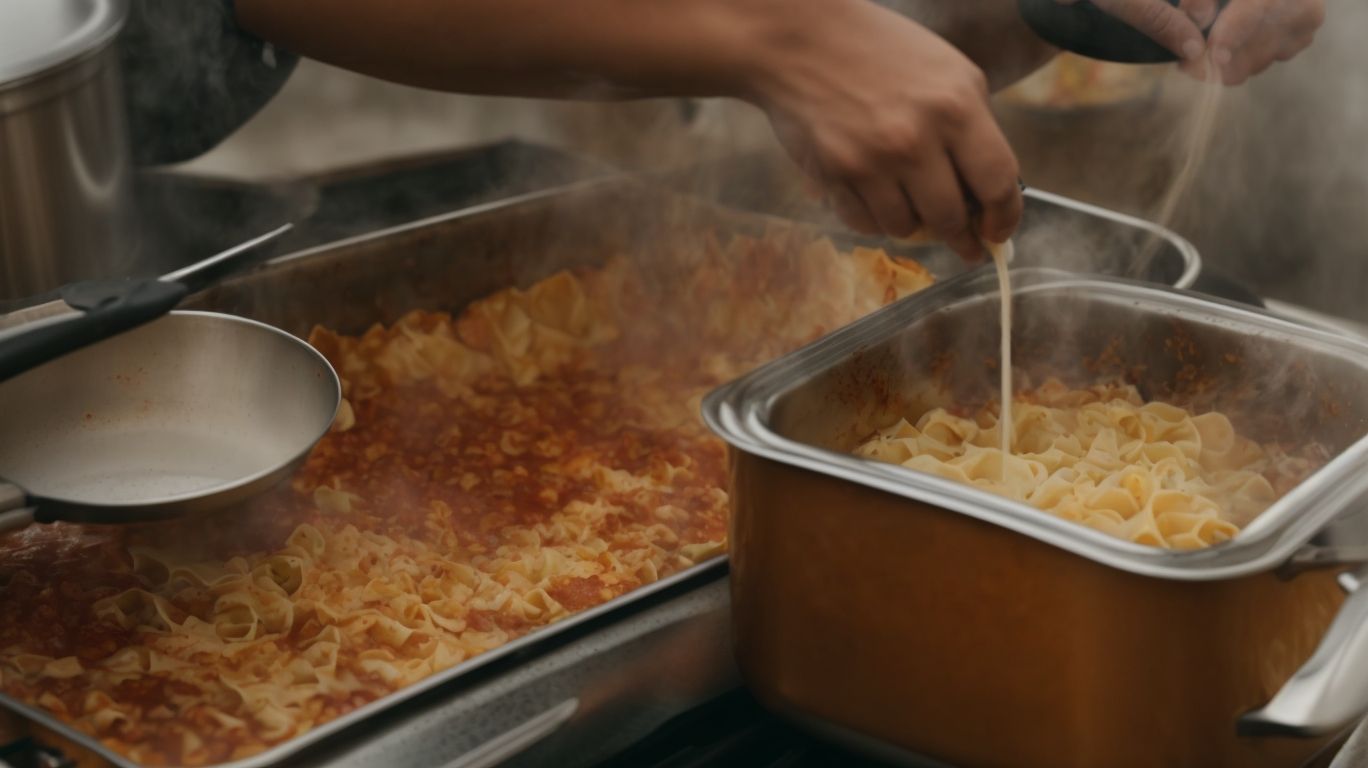
Credits: Poormet.Com – Larry Torres
Apart from traditional methods, there are alternative approaches to prevent lasagna noodles from sticking, such as using oven-ready noodles or non-stick pans.
When opting for oven-ready noodles, you can save time and skip the time-consuming step of pre-cooking the lasagna sheets, making the cooking process more efficient. These noodles are designed to absorb moisture from the sauce while baking, resulting in a flavorful and well-cooked lasagna dish.
On the other hand, utilizing non-stick pans can significantly reduce the chances of the noodles sticking to the bottom of the dish or pan. The smooth surface of the pan ensures easy removal and serving of the lasagna without the frustration of dealing with sticky noodles.
Use Oven-Ready Lasagna Noodles
Oven-ready lasagna noodles provide a convenient alternative to traditional noodles, reducing the chances of sticking during the baking process.
One of the major advantages of using oven-ready lasagna noodles is the significant time-saving element they offer. Unlike traditional noodles that require pre-cooking and careful handling to avoid clumping and sticking, these ready-to-bake noodles can be used straight from the box, streamlining the preparation process.
The consistent texture and thickness of oven-ready noodles contribute to more evenly cooked and cohesive lasagna layers, resulting in a dish that is visually appealing and perfectly balanced in flavors. This uniformity ensures that each bite delivers the desired combination of flavors and textures.
Use a Non-Stick Pan
Cooking lasagna noodles in a non-stick pan helps prevent them from sticking and ensures easy removal for assembling the dish.
One of the significant advantages of using a non-stick pan for cooking lasagna noodles is the convenience it offers. With a non-stick surface, you can effortlessly slide the noodles out without them tearing or getting stuck to the bottom of the pan. This not only saves time but also ensures that your lasagna layers remain intact and visually appealing when served. Cleaning up after cooking is a breeze with a non-stick pan, as food residue is less likely to cling to the surface, making the entire cooking process more efficient.
Use Parchment Paper
Lining the baking dish with parchment paper before assembling the lasagna can help prevent the noodles from sticking to the dish.
Not only does parchment paper act as a barrier between the noodles and the dish, but it also makes the entire dish assembly process a breeze. When the lasagna is ready to be served, the parchment paper allows for a seamless transition from oven to plate, ensuring that each portion is beautifully presented without any messy sticking incidents.
Troubleshooting Tips for Sticky Lasagna Noodles
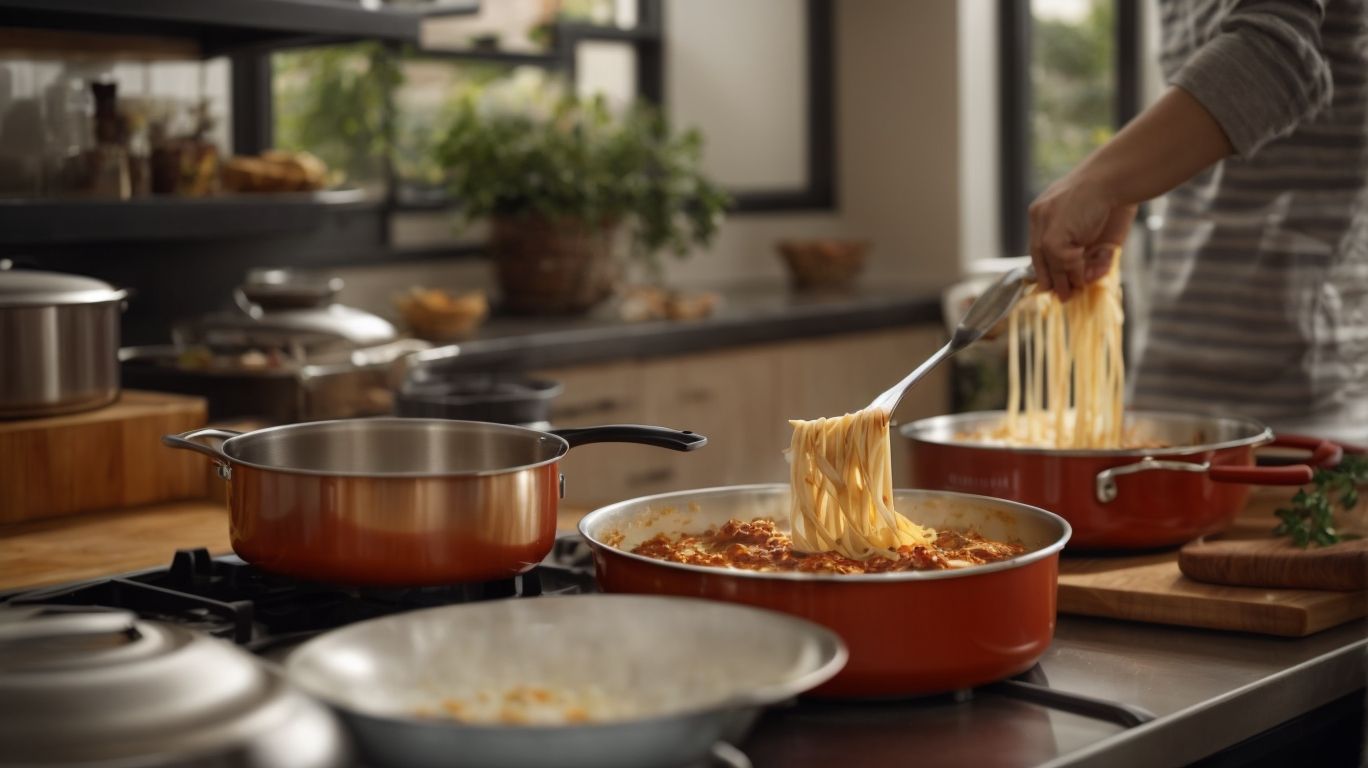
Credits: Poormet.Com – Jordan Lee
In case of sticky lasagna noodles, troubleshooting tips include adding more water, using a strainer for separation, and cooking noodles in smaller batches.
If you find that your lasagna noodles are sticking together more than you’d like, consider adjusting the water level in your pot. Ensure that there is enough water to keep the noodles separated during the cooking process. Allow the noodles some space to move around freely to avoid clumping.
- Another trick is to use a handy kitchen tool—a strainer. After boiling the noodles, drain them in a strainer before assembling the lasagna layers. This step can prevent excess moisture and starchiness that lead to stickiness.
- Experimenting with batch cooking can be helpful. Instead of cooking all the noodles at once, try boiling them in smaller batches. This can prevent overcrowding in the pot, allowing each noodle to cook evenly and minimizing the chances of them sticking together.
- Remember, troubleshooting sticky lasagna noodles is all about finding the right balance of water, space, and cooking method to achieve perfectly cooked, non-sticky noodles for your delicious lasagna dish.
Add More Water to the Pot
If the lasagna noodles are sticking, adding more water to the pot can help create a better cooking environment and prevent adhesion.
When lasagna noodles stick together during cooking, it can be frustrating and affect the overall dish’s presentation. By increasing the water volume in the pot, you not only provide more space for the noodles to move freely but also ensure they are fully submerged, resulting in more even cooking. This approach helps in preventing the noodles from clumping and sticking to each other, allowing them to cook separately and maintain their individual integrity.
Use a Strainer to Separate the Noodles
Using a strainer to separate cooked lasagna noodles can help prevent them from sticking together and ensure individual strands for layering.
When you transfer the cooked noodles into a strainer, the hot water drains away quickly, stopping the cooking process and preventing the noodles from becoming soggy. This not only maintains the texture of the noodles but also makes them easier to handle without falling apart.
The use of a strainer also allows the noodles to cool uniformly, ensuring that they are ready for layering without clumping together.
Cook the Noodles in Smaller Batches
Cooking lasagna noodles in smaller batches can help maintain control over the cooking process and prevent overcrowding that leads to sticking.
By cooking lasagna noodles in smaller portions, you ensure that each noodle has enough space to move freely in the boiling water, reducing the likelihood of them clumping together.
With this method, you have the flexibility to monitor the noodles closely, ensuring they reach the desired level of doneness without becoming mushy or falling apart.
Smaller batches allow for quicker and more efficient cooking, as the noodles cook more evenly and are easier to handle when assembling the lasagna layers.
Conclusion
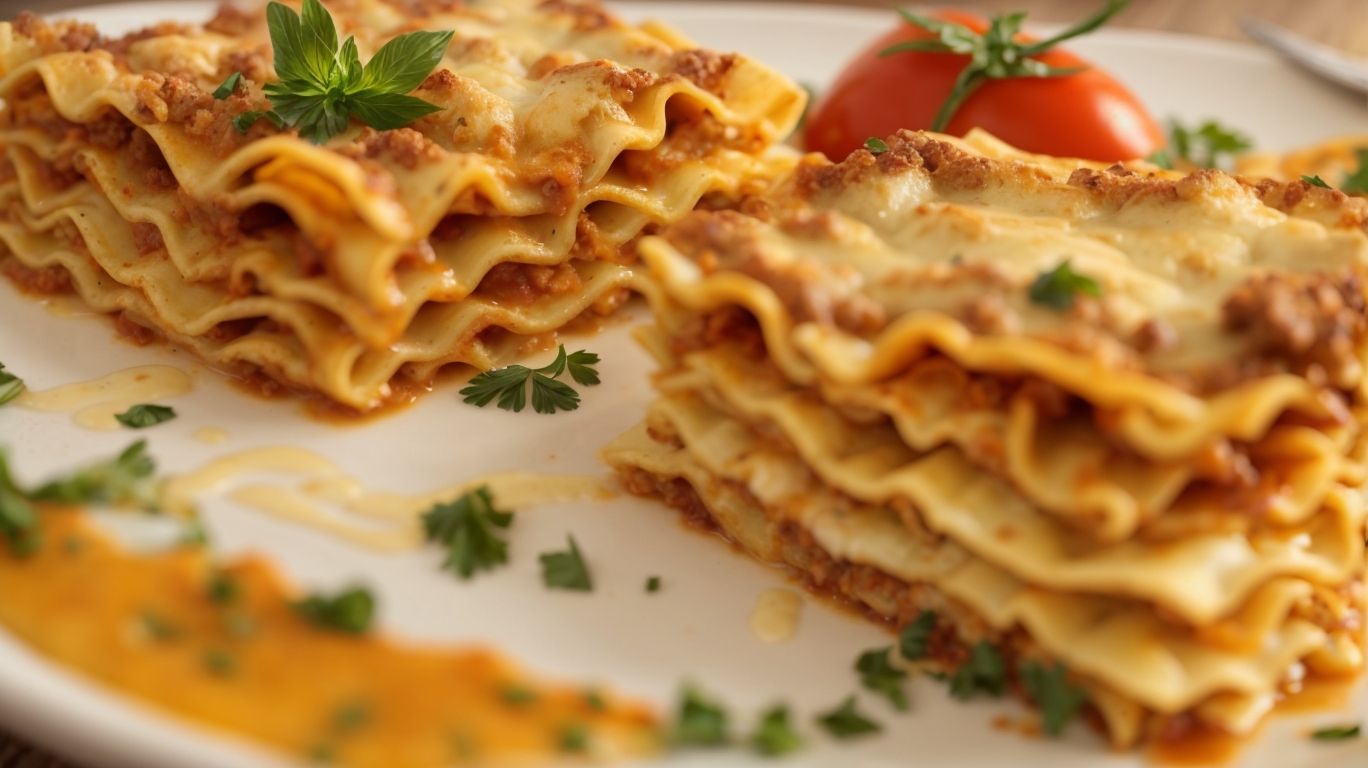
Credits: Poormet.Com – Bruce Hill
By following the right techniques and alternative methods, it’s possible to prevent lasagna noodles from sticking, ensuring a smooth cooking experience.
One effective way to avoid lasagna noodle sticking is to properly boil the noodles first, making sure they are al dente and rinsing them with cold water to prevent further cooking. Using a good amount of cooking oil in the boiling water can help create a barrier that reduces the chances of sticking. Another crucial tip is to layer the noodles with a generous amount of sauce, cheese, and other ingredients, as this also prevents them from clumping together.


